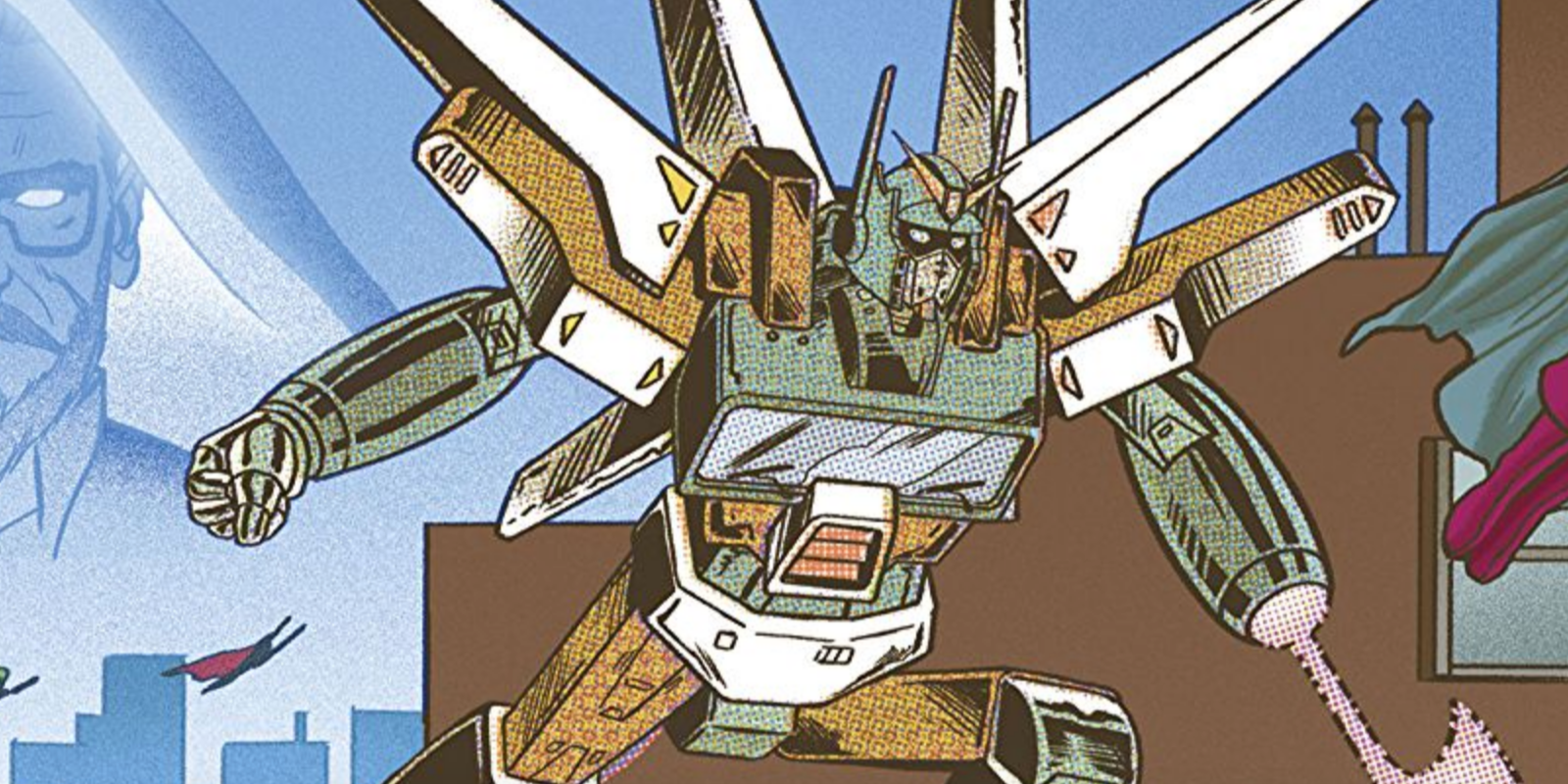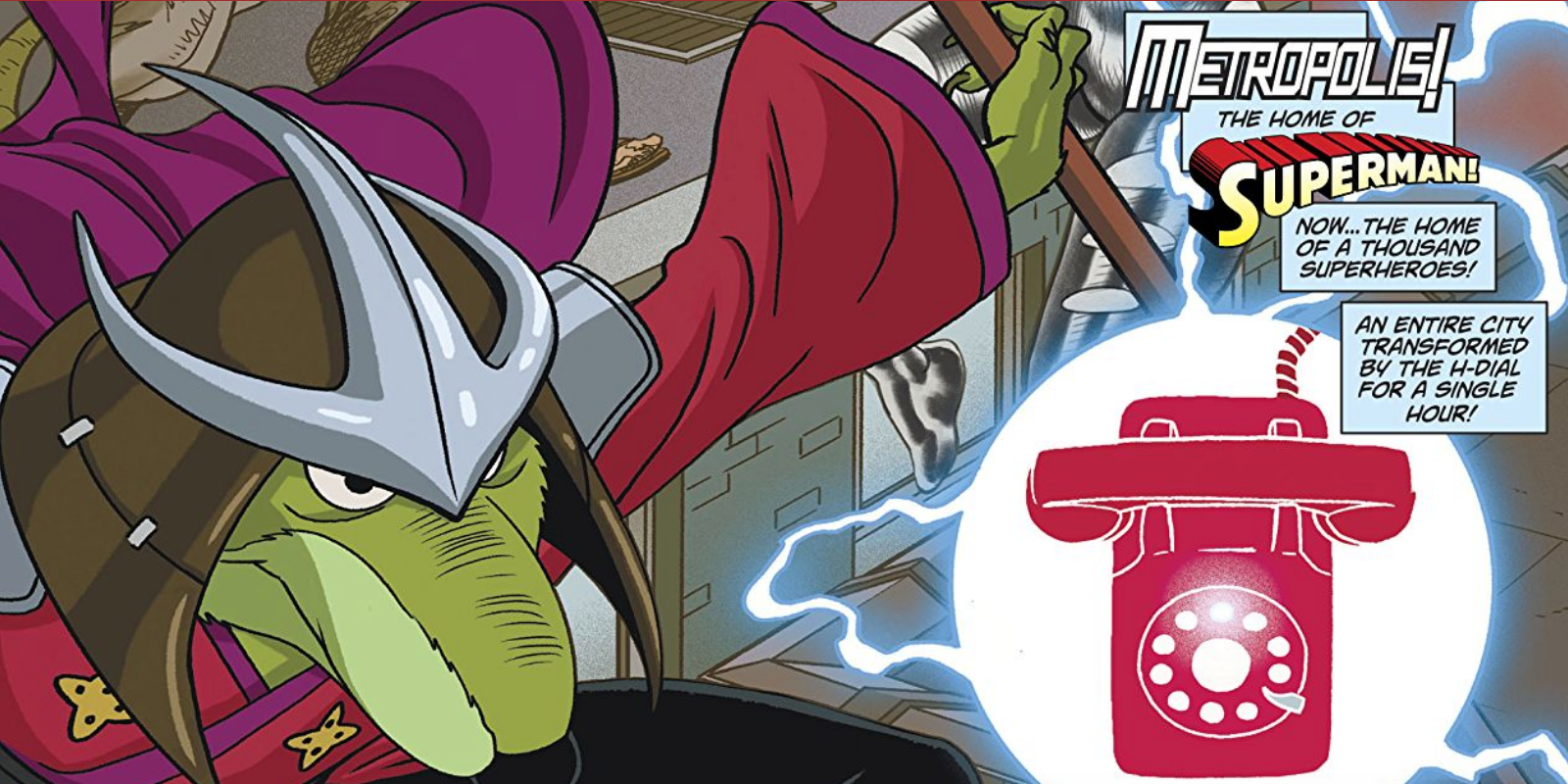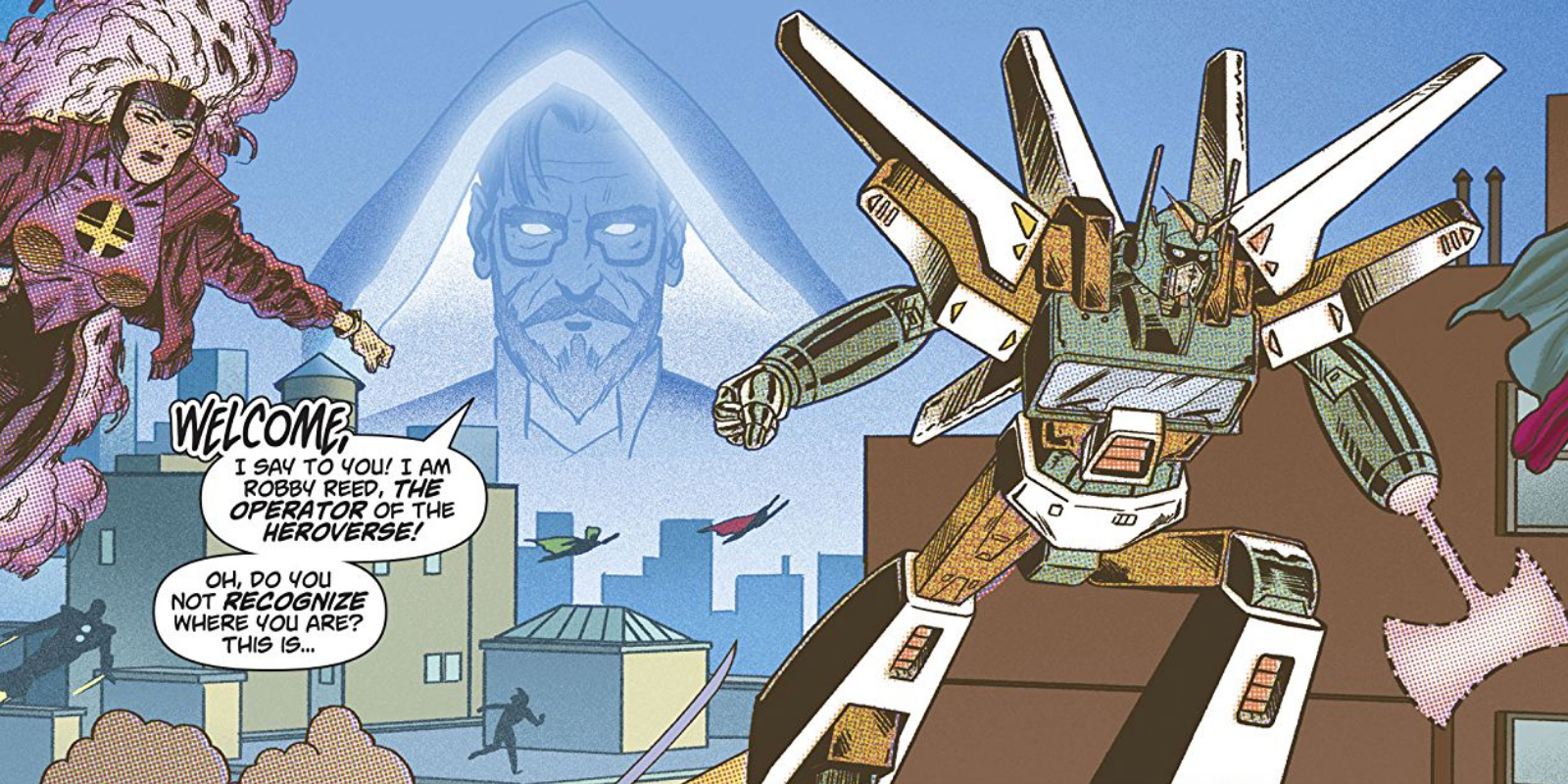WARNING: The following article contains spoilers for Dial H For Hero #7, by Sam Humphries, Coleen Doran, Erica Henderson, Stacey Lee, Michael Avon Oeming, Jordon Gibson and Joe Quinones, on sale now.
DC characters like Superman and Batman are so culturally ubiquitous that they appear by way of pastiche all the time in non-DC media. But how about a DC book coming up with its own non-DC parodies? And does the DC universe have the same cartoons as the real world? The latter question is somewhat answered in Dial H for Hero #7. Here, readers are shown what may be the DC Universe equivalents to characters from Transformers and Teenage Mutant Ninja Turtles and more.
SUPERHEROES IN A HALF-SHELL
Issue #7 begins with the everyday citizens of Metropolis becoming superhero characters, all courtesy of Robby Reed, Operator of the Heroverse. The two most prominent of these heroes are Optimus Prime and Master Splinter, or at least, trademark-safe facsimiles of them.
Not-Timus Prime has a design that appears to be a mix between the Autobot leader and something typical of the mobile suits from another super robot franchise: Gundam. The head antennae, faceplate, ax, and truck chest make it clear that it's supposed to be Prime, however. Similarly, "Splinter" has a design that combines his look from the 1980s TMNT cartoon with Shredder's armor and the Turtles' own green skin. Despite this amalgamation of various characters, it's even more obvious who "Splinter" is supposed to be.
The other figures in the crowd mimic other well-known comic book properties. The flying woman has a design that combines elements of popular female X-Men characters, specifically Rogue, Phoenix and Psylocke. Her contrail carrying hair also resembles DC's own Starfire. A samurai character is seen carrying a cartoonish rabbit on his back. This is possibly in reference to the iconic manga, Lone Wolf and Cub, and definitely the rabbit rōnin, Usagi Yojimbo. The other heroine is a sultry spy character, resembling both Marvel's Domino and the indie comic character, Tank Girl. The art style that she's drawn in also reminiscent of the comic book, Empowered.
MORE THAN MEETS THE EYE
The premise is that regular humans in Metropolis are able to act upon the series' title and transform temporarily into a superhero, with their superpowered form typically personifying some element of their own personality.
For instance, one of the characters who dials "H" is a service dog trained to dial 9-1-1. Her bravery and warm-hearted innocence allow her to become a Sailor Moon expy. Being a dog at heart, however, she never speaks, and chases a squirrel amidst her heroics. Other characters' transformations include an "appearances" by Mega Man, Detective Conan, a mohawk-wearing character who looks like a blend of DC's Starman and OMAC with Marvel's Gladiator, and a He-Man stand-in getting busy (and not in the superhero business kind of way...).
The biggest question is, do the characters that these personas embody exist in some form or fashion in the DC Universe? Are these combined cross-universe exports simply imaginative fusions meant to represent the person's inner personality or is this the closest that the DC Universe has to these real-world rival franchises?
It's more than likely just a quick way to create new character designs from established icons without having to pay the royalties for said icons. And, to look it from another viewpoint, most generic superhero characters will at least superficially resemble Superman or Batman. It's hard to reinvent the wheel.
KEEP READING: PREVIEW: Dial H for Hero #7



